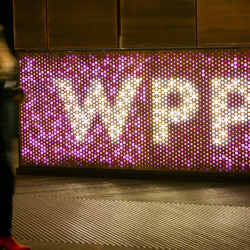Channel 4, ITV and Sky are collaborating with Comcast to launch a self-service advertising marketplace that will enable small and medium-sized businesses to run a single campaign across all three sales houses.
This move, which was announced on 17 June, has been loudly applauded by the industry. Maria Rua Aguete, head of media and entertainment at Omdia, called it ‘a bold and intelligent response to the challenges of today’s media landscape’. And Lindsey Clay, CEO at Thinkbox, added that the media owners ‘should be congratulated’ for making TV ‘more accessible and more future-fit’.
The self-service TV ad buying marketplace, which will be powered by Comcast’s Universal Ads platform and FreeWheel’s technology, is set to launch in 2026 and seeks to attract digitally-native advertisers who may be new to TV by giving them easy access to premium inventory.
‘We think there’s a real need for simplicity, particularly for the small to medium business community who are used to buying social and YouTube and don’t have an agency to support them or don’t have the infrastructure,’ Barry John, head of sales operations at Channel 4, told MediaCat at Cannes.
When asked what placements SMEs will be able to buy, John explained that the broadcasters have agreed on segments and that buyers will not be able to make broadcaster-specific purchases.
‘Where we have the same product set, you’ll be able to buy those because if you could only buy products on Channel 4, then you’d only be buying Channel 4. There has to be uniformity in the product mix.’
He added that they expect to have ‘genre-based type targeting’ where all three broadcasters will have entertainment or sport content, for example.
The benefits of TV
Clay said that the launch of the marketplace is ‘huge news for smaller businesses’ because it will help put ‘the most effective, most trusted advertising environments at their fingertips’.
‘TV works for advertisers of all sizes in all categories,’ she said. ‘It gives short-term results and builds long-term brands. It is the least risky, most predictable advertising investment a business can make.’
The new platform will not just enable advertisers to buy inventory; it will also allow them to measure and optimise their campaigns.
‘We know that a 30-second ad on television on the big screen is very effective. We believe that with the measurement approach that the Universal Ads team can work through will show and prove to the advertisers that it’s working,’ John said.
He added that advertisers who run campaigns on TV will see additional benefits: ‘We know from other research that TV makes all other forms of media work harder […] whether it be Google Search or social or whatever. It’s the recollection.’
Expert view:
Maria Rua Aguete, head of media and entertainment at Omdia
This initiative demonstrates that broadcasters are embracing the idea that scale and simplicity matter more than ever to advertisers. In today’s fragmented media landscape, marketers are looking for efficient ways to reach audiences across platforms, with unified targeting and clear performance metrics. Until now, that level of integration and consistency has been a core advantage held by the big tech platforms such as Google, Meta, and increasingly Amazon. Broadcasters forming this kind of alliance is a bold move to reclaim share of the advertising market and deliver a compelling alternative to the digital giants.
From my perspective, this is not a defensive move. It is a proactive step that shows these companies understand the evolving needs of advertisers. By creating a combined platform, they are making it easier for brands to access high-quality, brand-safe inventory at scale, supported by robust data and shared measurement frameworks. This is the type of innovation that can change how agencies and advertisers approach media planning.
The potential impact of this new marketplace is considerable. Firstly, it brings together three of the most powerful broadcast brands in the UK, all with strong direct-to-consumer platforms, long-standing relationships with audiences, and highly valuable premium content. If the marketplace is executed effectively, it can provide advertisers with a one-stop solution that covers live television, video on demand, streaming environments, and possibly even newer forms of content, such as shoppable video or addressable formats.
Secondly, this initiative could shift the narrative in the advertising industry. For years, there has been a slow but steady migration of marketing budgets toward digital platforms. Much of that shift was driven by performance, targeting, and perceived ROI advantages. But advertisers are now questioning the effectiveness, transparency, and brand safety of some digital environments. A unified broadcaster solution that offers scale, quality content, audience trust, and measurable outcomes could attract renewed interest from marketers seeking both reach and responsibility.
Will marketing budgets shift? I believe they will, but not overnight. The shift will depend on how well this alliance is implemented, the strength of the product offering, and how quickly advertisers see tangible results. If this marketplace succeeds in reducing buying complexity, improving targeting, and delivering better attribution, it could encourage a rebalancing of spend. Advertisers might allocate more to premium video again, knowing they can reach audiences across multiple broadcaster platforms in a seamless, data-enriched way.
It is also worth noting that this is not an isolated move. We are seeing similar trends in other markets. In France, for example, broadcasters are exploring partnerships to unify ad sales. In the United States, the launch of joint initiatives among NBCUniversal, Paramount, and others reflects a growing understanding that collaboration is not a weakness, but a competitive strength in the digital era.
In short, I view this new advertising marketplace as a bold and intelligent response to the challenges of today’s media economy. It reflects an understanding that to stay relevant, broadcasters must offer more than just great content — they must also deliver scale, precision, and simplicity to advertisers. By working together, they have a much better chance of doing just that.
The broadcasters are further discussing a solution, based on ITV’s self-serve platform Planet V, to simplify how media agencies buy addressable inventory.
John told MediaCat that no firm decisions have been made at this stage.
Featured image: Glenn Carstens-Peters / Unsplash






















